Spot reduction
Spot reduction refers to the reduction of fat from a specific area of the body. There is a common view that it is possible to achieve spot reduction through exercise of specific muscles in the desired area, such as exercising the abdominal muscles in an effort to lose weight in or around one's midsection. Advertisers sometimes play on this concept when advertising exercise-related products. However, many fitness experts do not believe it is possible to reduce fat in one area by exercising that body part alone. Instead, fat is lost from the entire body as a result of diet and regular exercise.Muscle tone in the abdominal region does not reduce fat in that region.Instead, being on a caloric deficit is recommended for reducing abdominal fat.
The misunderstanding may be contributed to by the firming and shaping effect of muscle hypertrophy. When additional muscle is built, it takes up new space which can briefly compress subdermal fat against the skin until the skin adapts, a larger bulging muscle shape is also more easily seen through the layer of fat on top of it. This can give the illusion of fat being reduced when it has not. For example, triceps hypertrophy firming the back of the arm.
A combination of diet and exercise can you help you kick start a fat-reduction program, but be aware that "spot-reducing," the targeted loss of body fat in certain locations like the belly or the thighs, really can't be done. The first place you start to show some flab is often the last place where you'll see a reduction. But if you stick with a healthy eating plan and regular exercise, you'll lose body fat all over, and the more intensely you pursue it, the faster it melts away.Weight Training
Lifting weights and doing other resistance exercises, such as push-ups, can help speed your weight loss by revving your metabolism. A Tufts University study of women on the same diet found that those who also did weight training burned significantly more fat those who just dieted. Another Tufts study found that 12 weeks of weight training can increase your metabolic rate, which affects how efficiently you burn calories, by 15 percent.Cardio After Weights
Fitness experts say it takes the body, on average, about 15 minutes of exercising to start burning fat. So if you put in 30 minutes on the treadmill or stationary bike, you're only burning fat during those last 15 minutes. But if you lift weights first, your body is warmed up and is already starting to burn fat by the time you start your cardio workout.Interval Training
The best way to burn fat is through long periods of intense exercise, but if you've been somewhat sedentary, then make those intense bursts shorter and alternate them with periods of more moderate activity. For example, set your treadmill for two minutes at 7 mph and then two minutes at 4 or 5 mph, and alternate those faster and slower periods for 20 to 30 minutes. Interval training will get your metabolism working hard while you build your endurance to make those intense bursts last longer.Food Focus
To eat healthier and lose weight in the process, concentrate on what you should be eating, such as three to five servings of fruits and vegetables daily, rather than what you should avoid. This shift in focus will not only help make sure you're getting the right foods, but it will help fill you up, so you won't be as tempted by the bad stuff. Also, substitute water for sugary and/or alcoholic drinks, which have too many calories and little nutritional value.

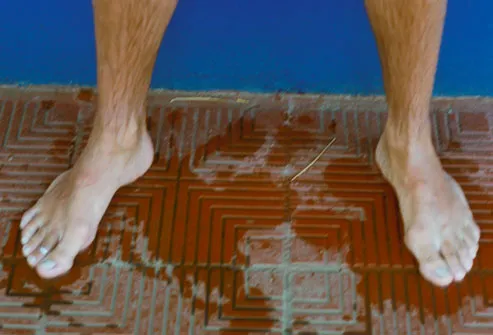
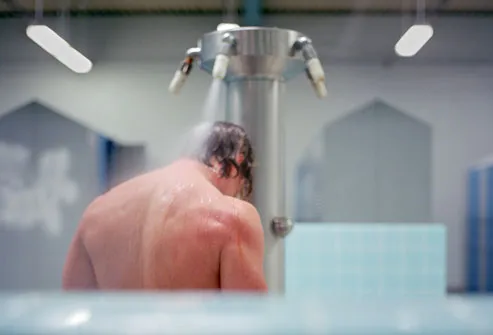
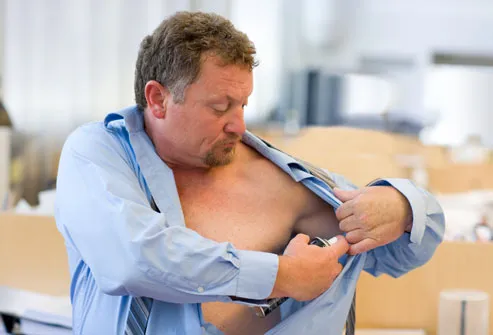
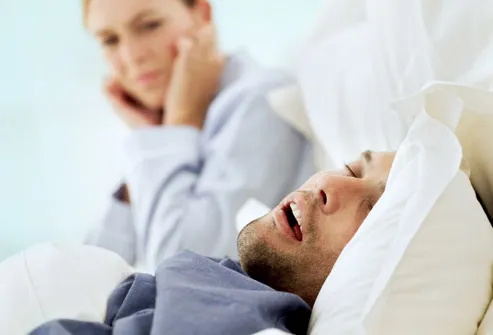
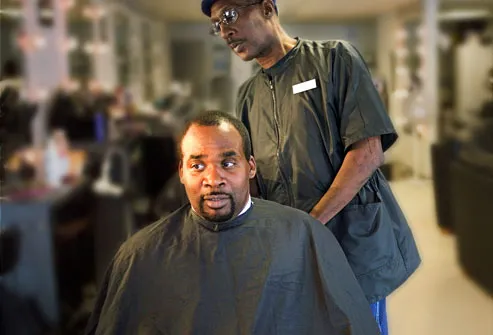
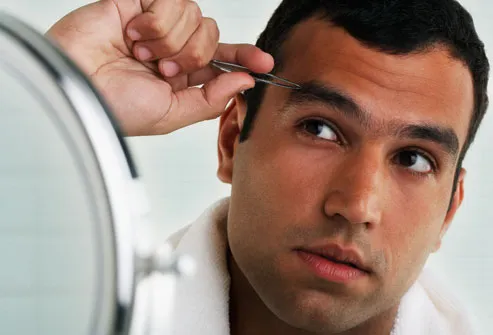
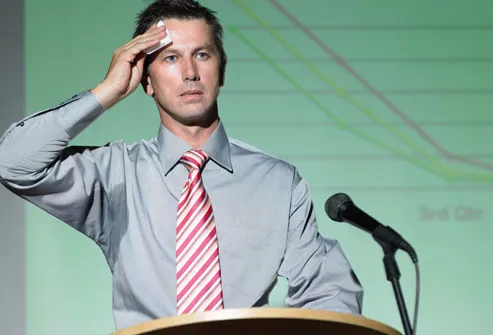


Embarrassing Male Body Problems
1. Back Hair
By the mid-20s, a man will know his back hair destiny: barely there, a few tufts, or full and bushy. Is yours a magnet for women? Or a throwback to the Stone Age? If you want to tame the shag, laser hair removal can thin back hair or remove it all, and the results are nearly permanent. Cheaper options include waxing, hair removal creams, and razors, with results that last up to a few weeks.
2. Beer Belly
You don’t have to drink beer to get a beer belly. Men are more likely to gain fat around the waist, so anything fattening can pad the paunch. Unfortunately, belly fat raises the risk of heart disease, especially if your waist size is more than 40 inches. But there is good news: If you follow a weight loss plan, belly fat is usually the first to go.
3. Excessive Sweating
Men have a higher "sweat output" than women. That's a fact. But if you always need to wipe your hands or often sweat through your clothes, it may be more than a "guy" thing. It could be excessive sweating, called hyperhidrosis. Emotions or heat can trigger the downpour -- or nothing at all. It usually affects the armpits, palms, or soles of the feet. Effective treatments are available through a health professional.
4. Unibrow
Now here’s a hair problem that affects men of all ages. The same hormones that make your beard grow can make your eyebrows so thick and bushy that they meet in the center. "Unibrow" is the most common reason young men get electrolysis. This procedure uses tiny electric shocks to permanently destroy the hair follicles. Waxing is another way to shape your brows, but it must be repeated every 4-6 weeks.
5. Receding Hairline
The painful truth is most guys have noticeably thinner hair by age 35 and significant hair loss by age 50. The pattern usually begins with a receding hairline and may progress to bald spots on the top of the scalp. Hair restoration surgery offers a way to reduce bald patches. Or you can talk to your doctor about prescription medicationsfor hair loss. But beware of other products that promise the moon.
6. Snoring
Face the music: Snoring is a surefire way to disrupt your bed partner’s sleep, and men are more likely to be the perpetrators. In most cases, snoring is not harmful. But snoring regularly can chip away at the quality of your own sleep. It can also be a sign of a more serious problem called sleep apnea. If you feel snoring is disrupting you or your partner’s sleep, consult a doctor.
7. Body Odor
Whether you’re working hard or playing hard, any strenuous activity can result in strong body odor. The culprit is not sweat itself, but the bacteria that use sweaty skin as a breeding ground. You can fight the bacteria by showering regularly with soap and using antiperspirant. Also be sure to wash workout clothes often. If body odor persists, try avoiding smelly foods like garlic and onions
8. Jock Itch
You don’t have to be a pro athlete to get jock itch. This fungal infection spreads easily at your local gym -- or from another part of your own body. Hands, towels, and stepping into underwear are common culprits. The symptoms include a patchy rash on the groin or inner thighs, along with the telltale itching. It’s treated with nonprescription antifungal creams. Keeping the area dry and avoiding tight clothinghelps to avoid a repeat engagement.
9. Athlete’s Foot
When the fungus that causes jock itch targets the feet, you have athlete’s foot. Walking barefoot in locker rooms or near pools is the most common way to pick up this infection. Symptoms include itching, burning, blisters, or cracks on the feet and toes. Athlete’s foot is treated with antifungal cream. If you have both jock itch and athlete’s foot, be sure to treat them at the same time.
10.Sexual Dysfunction[b]
Men may not be eager to discuss sexual troubles, but nearly a third of guys experience problems. This may include a sagging libido, premature ejaculation, or erectile dysfunction (ED). ED means a man is unable to develop or sustain an erection. Risk factors for ED include diabetes, heart disease, neurologic conditions, smoking, circulation problems, and some medications. Talk to your doctor if you have ED or other sexual problems.

No comments:
Post a Comment